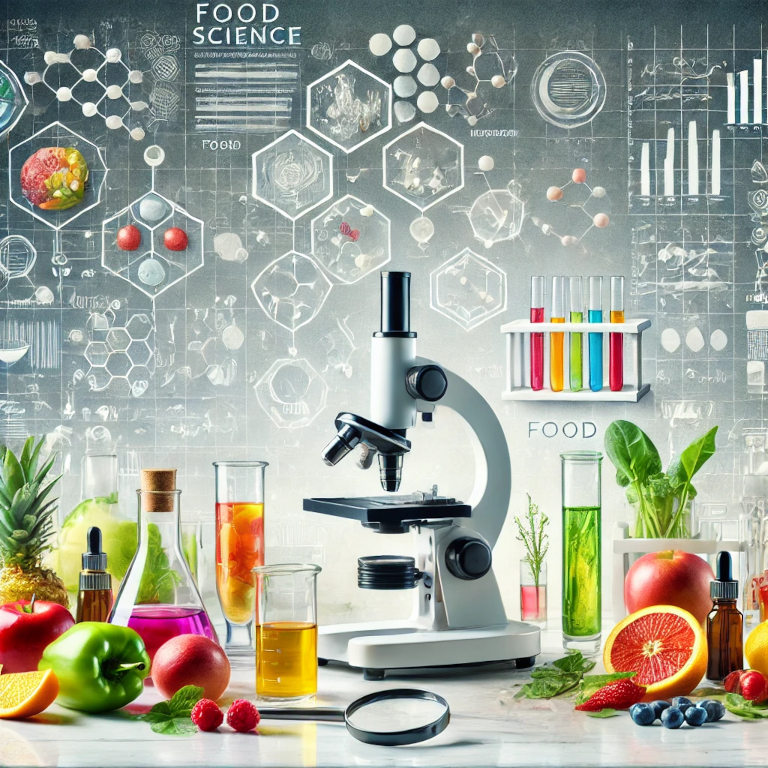Food science is a fascinating field that blends chemistry, biology, and nutrition to understand the principles behind food processing, preservation, and safety. As an expert in Food and Cooking, I will delve into the intricacies of food science, explaining its significance and how it impacts our everyday lives. This article aims to provide valuable insights into the science of food, enhancing your appreciation and knowledge of the culinary arts.
What is Food Science?
Food science is the study of the physical, biological, and chemical makeup of food and the concepts underlying food processing and preservation. It encompasses a wide range of disciplines, including microbiology, chemistry, engineering, and nutrition. The primary goal of food science is to ensure the quality, safety, and sustainability of our food supply.
Key Areas of Food Science
1. Food Chemistry: This area focuses on the chemical composition of foods and the changes that occur during processing, storage, and cooking. Understanding food chemistry helps in developing new food products and improving existing ones.
2. Food Microbiology: Food microbiology studies the microorganisms that inhabit, create, or contaminate food. It is crucial for ensuring food safety, preventing foodborne illnesses, and developing fermentation processes.
3. Food Engineering: Food engineering applies principles of engineering to the processing and production of food. It involves designing equipment and processes to manufacture food products efficiently and safely.
4. Nutrition: Nutrition science examines the nutrients in food and how they affect human health. This knowledge helps in creating diets that promote health and prevent disease.
5. Sensory Science: Sensory science involves the study of how food is perceived by our senses – taste, smell, sight, touch, and hearing. It is essential for developing products that are not only nutritious but also appealing to consumers.
The Role of Food Science in Everyday Life
Food science plays a pivotal role in our daily lives by ensuring the food we eat is safe, nutritious, and enjoyable. Here are some ways food science impacts us:
1. Food Safety: Food scientists work to prevent contamination and spoilage by developing preservation methods such as pasteurization, refrigeration, and canning. They also establish safety standards and conduct testing to ensure food products are safe for consumption.
2. Food Quality: By understanding the chemical and physical properties of food, scientists can improve texture, flavor, and shelf life. This includes developing additives that enhance flavor or preservatives that extend the freshness of products.
3. Innovation: Food science drives innovation in the culinary world, leading to the creation of new food products and cooking techniques. This includes everything from plant-based meats to molecular gastronomy.
4. Nutrition: Nutritionists and dietitians use food science to develop dietary guidelines and meal plans that promote health and well-being. This involves analyzing the nutrient content of foods and understanding how different nutrients interact with the body.
5. Sustainability: Food scientists work on developing sustainable practices in food production, such as reducing waste, improving crop yields, and creating eco-friendly packaging.
Practical Applications of Food Science
1. Fermentation: Fermentation is a process that uses microorganisms to convert sugars into alcohol or acids. This process is used in making products like yogurt, cheese, beer, and sauerkraut. Fermentation not only enhances flavor but also increases the nutritional value of foods.
2. Emulsification: Emulsification is the process of mixing two immiscible liquids, such as oil and water. This is essential in making products like mayonnaise, salad dressings, and sauces. Emulsifiers, such as lecithin, stabilize these mixtures.
3. Maillard Reaction: The Maillard reaction is a chemical reaction between amino acids and reducing sugars that gives browned foods their distinctive flavor. This reaction is responsible for the delicious flavors in grilled meats, baked bread, and roasted coffee.
4. Hydrocolloids: Hydrocolloids, such as gelatin and pectin, are used to modify the texture of foods. They can thicken, gel, or stabilize products, making them essential in the production of jams, jellies, and desserts.
5. Food Preservation: Preservation techniques such as drying, freezing, and canning are crucial for extending the shelf life of foods and preventing spoilage. These methods help maintain food quality and safety over time.
Food science is a multidisciplinary field that ensures the food we consume is safe, nutritious, and appealing. By exploring the chemistry, microbiology, engineering, and nutrition of food, scientists can innovate and improve our food supply. Understanding food science enhances our appreciation of the culinary arts and the complex processes that bring delicious and safe food to our tables. Embrace the science behind food to unlock new culinary possibilities and promote a healthier, more sustainable future.






